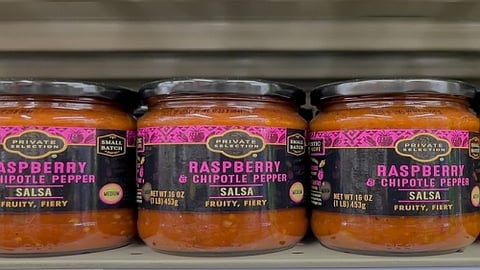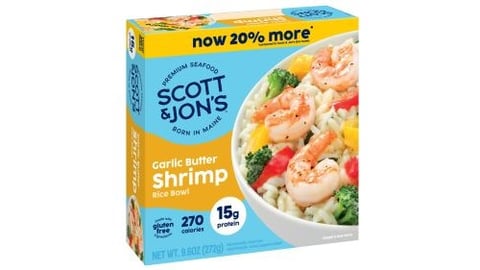The Real Deal on Inflation
Are complaints about eye-popping inflation, well, inflated? A recent briefing from FMI – The Food Industry Association, featured experts who dug into data to present an even look at the perceptions and realities of elevated prices in the current marketplace.
In the Feb. 28 webinar, Leo Feller, chief economist at Numerator and senior economist and professor at UCLA, put inflation in context, from what the government’s Consumer Price Index (CPI) benchmark tracks to consumers’ ability to afford groceries and adjust their behaviors. For example, he said, personal incomes have grown 24.1% since January 2020 while the CPI for all items has risen 19.2%, meaning that affordability is up 4.9% if consumption baskets are constant. That also takes into account the lapse of pandemic-era emergency assistance.
[RELATED: As Price Stickiness Remains, So Does Consumer Wariness]
“Even though prices are higher, people are earning more income and have more purchasing power. If we break this down into a few categories, we see some items becoming less affordable and other items that have become more affordable,” he explained. “Food at home and food away from home have increased about 25% in aggregate, while incomes have increased 24% in aggregate. So the real story is that food has become about 1% less affordable than in January 2020.”
He also pointed out that the CPI, while a common inflation gauge, is designed to capture “sticker stock” by determining what consumers buy and then tracking the price of that basket in a constant way over time. But, Feller added, shoppers have not always been constant in their reaction to higher prices.
Price in Perspective
Indeed, the economist noted, consumers by and large have adjusted their behaviors, reflecting their ongoing resilience. For example, although margarine prices have rocketed 54%, shoppers have other choices, like buying real butter that has gone up significantly less or cheese that has also experienced a slower pace of price increases. “Consumers have quite a bit of choice to trade to different types of products that have become more affordable over time,” Feller said.
Additionally, he shared data points supporting the easing of inflation, even as grocery prices remain a hot topic in political and even everyday discourse. “We understand the frustration that consumers are experiencing and the political dialogue that’s happening, but that is referring to the period in 2022 when there was a bigger gap between food-at-home prices and income, which has grown to catch up,” he said.
[RELATED: Grocers Under Fire For High Food Prices]
Recent data dispels other myths around the pinch and pain of inflation. For instance, overlaying data for the CPI and the Producer Produce Index (PPI), along with the commodity price index for farm products, one can see that those three rates have tracked closely in recent times. This suggests that consumers didn’t absorb the highest cost increases.
Meanwhile, for those hoping current prices will drop significantly, Feller pointed out that historically, aggregate price levels almost never go down. “If they do, it’s usually because something bad is happening in the economy. There really isn't a catalyst for food prices to come down,” he noted, adding that the overall economic conditions are not unfavorable right now.
Still, elevated prices impact many consumers, the data affirms. “Different types of consumers have different levers they can pull. We know that higher-income consumers have more levers – they tend to shop at higher-end grocery stores and if situations get tougher, they can go to less expensive stores, take advantage of promotions or buy bulk. It’s more difficult for lower-income consumers, though, to buy a 16-count roll of paper towels, for example,” Feller pointed out, adding, “While the CPI is really important because it captures sticker shock, we as a profession need to find out what lower-income, middle-income and higher-income consumers are doing in response.”’
The Resilient Consumer
Steve Markenson, VP of research and insights at FMI, also weighed in on the real story behind food prices and inflation, amplifying Feller’s insights on the current inflationary environment. Markenson shared FMI’s latest figures on average weekly grocery spending per household, which is holding steady at $165 compared to $164 a year ago. He also emphasized the fact that although inflation remains top of mind, eight of 10 consumers report that they “love, like or don’t mind” grocery shopping.
“Certainly, there is concern about grocery prices, but consumers are still positive about grocery stores,” he said. He shared another data point showing that 55% of consumers believe that their primary grocery store is “on their side” when it comes to financial well-being, a figure that's notably higher than other sectors, like state, local and federal government, health insurance businesses and pharmaceutical/drug companies.
FMI’s data also indicates that shoppers have been cushioning the blow of inflation over the past few years by looking for more deals and buying store brands, among other habits. “Consumers are being very savvy and very prudent in their approach to shopping, figuring out what works for themselves and their family budgets,” Markenson remarked.
The briefing also covered the issue of "shrinkflation," which was recently called out by President Biden. Feller, for his part, explained that the CPI already adjusts for changes in quantity. Even if producers reduce volume or quantity, he added, consumers are generally still able to buy the product for the same price rather than paying a higher price or foregoing the purchase. “For families on fixed budgets, raising prices might be more difficult for them,” he observed.











